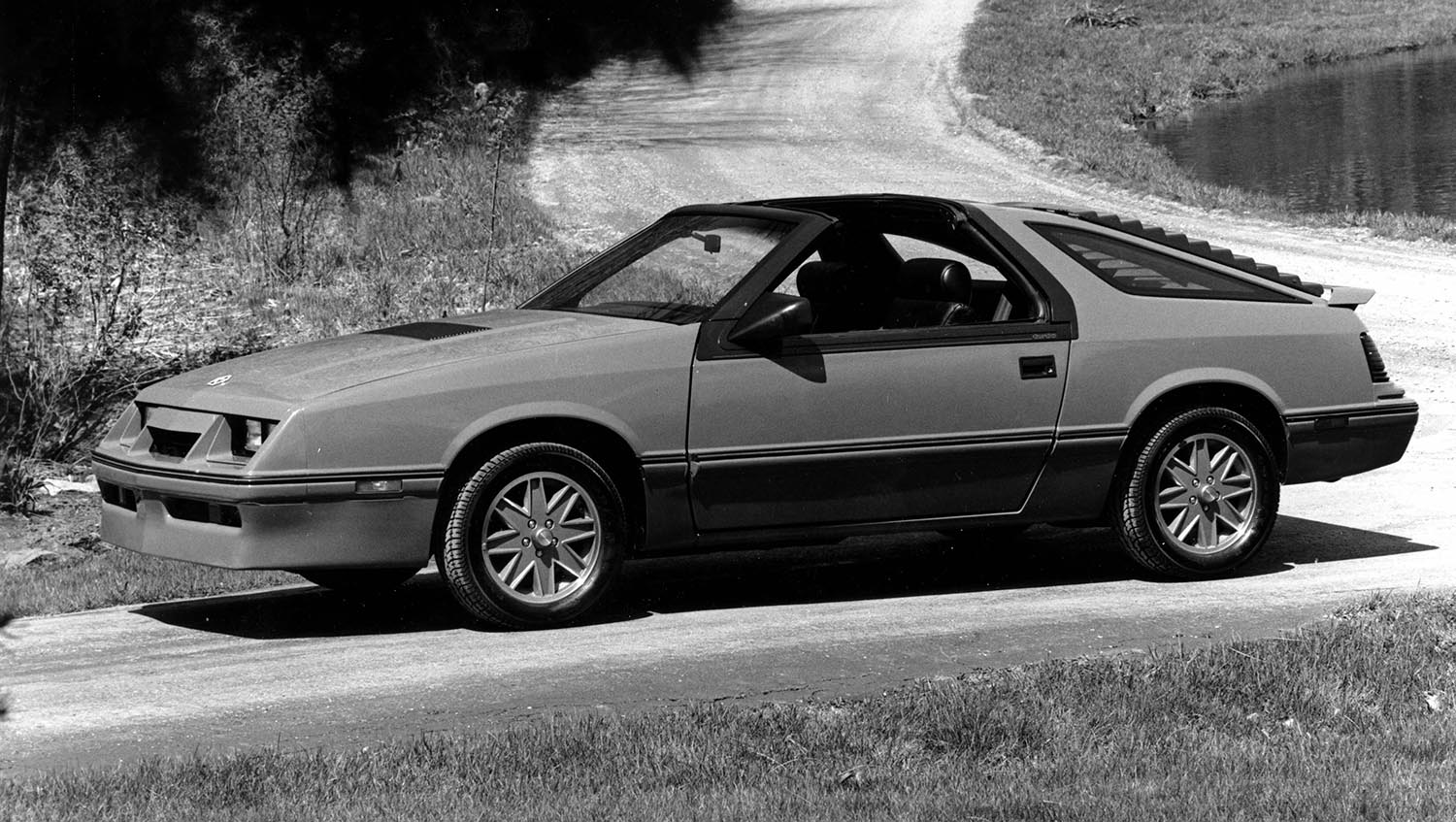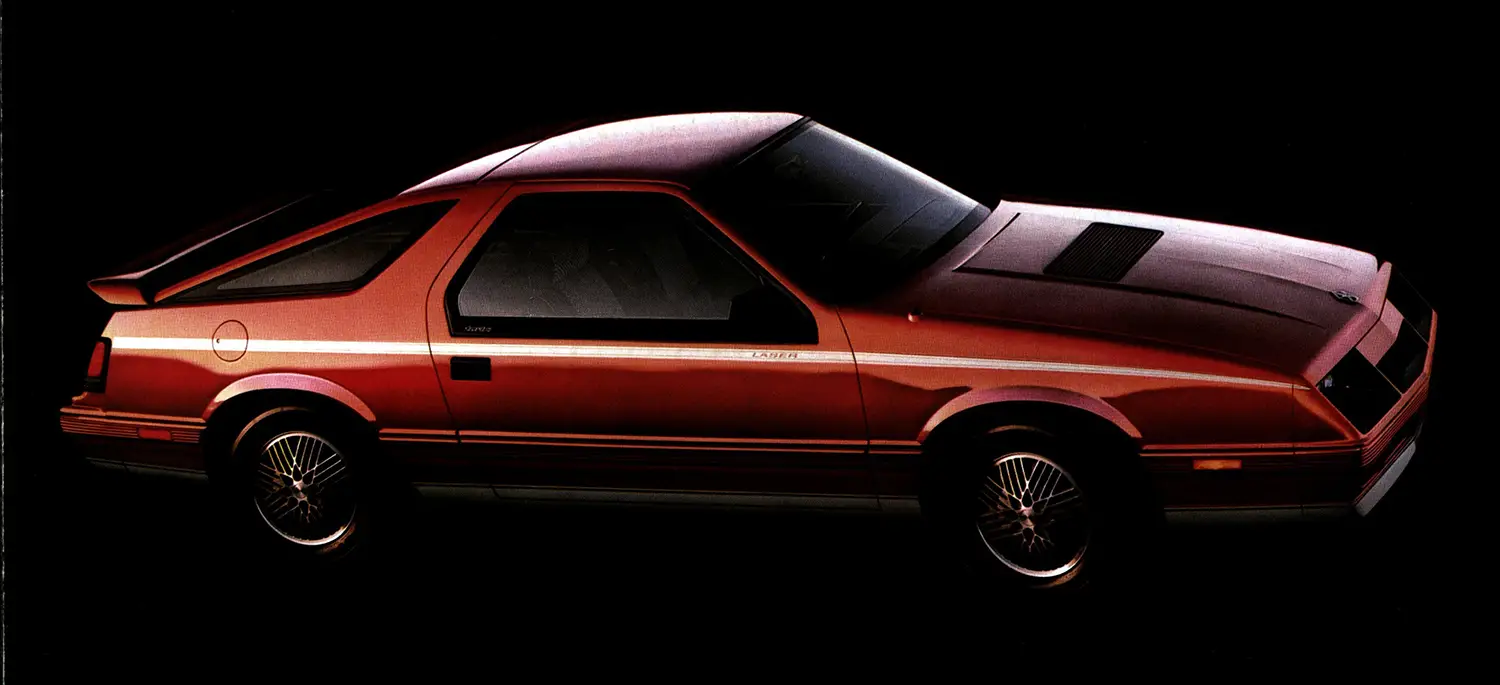
The 1980s were defined by a new emphasis on aerodynamics, technology, and compact performance. American manufacturers scrambled to shake off the malaise era and produce vehicles that could rival the best sports coupes from Japan. The 1984 Chrysler Laser emerged as Chrysler Corporation’s aggressive entry into this modern sport compact arena. It was a vehicle that attempted to fuse performance credentials with a surprising level of luxury and cutting-edge technology.
The Genesis of Chrysler’s Sport Compact
The Laser was developed alongside its sister car, the Dodge Daytona. Both shared the new G-body platform, a derivative of Chrysler’s wildly successful K-car architecture. Using an established platform allowed Chrysler to minimize development costs while still delivering a sleek, contemporary design. This strategy proved essential to the company’s turnaround.
A Premium Position in the Lineup
Unlike its more overtly performance-oriented sibling, the 1984 Chrysler Laser was deliberately positioned as the upscale model. It was intended as an “executive personal luxury coupe” to appeal to a more mature and affluent buyer. This emphasis on refinement was evident in the interior appointments, available features, and exterior trim.
Design and the Digital Revolution
The styling of the Laser was a significant departure for the Chrysler brand, embracing the sharp angles and wedge-like silhouettes popular at the time. Its sleek, low-slung body with concealed headlights gave it a contemporary, high-speed look. This clean design contributed to a respectable drag coefficient, aligning it with the decade’s focus on aerodynamic efficiency.

Inside the High-Tech Cabin
The interior truly embodied the decade’s technological infatuation. The optional digital instrument cluster, featuring a cool graph-paper-grid motif, made the Laser feel futuristic. Furthermore, the car could be equipped with the “Electronic Voice Alert” system. This feature used a synthesized voice to deliver warnings like “A door is ajar” or “Your fuel is low,” offering a unique and memorable user interface.
The XE and XT Trim Levels
The 1984 model was initially offered in a standard base trim and the upmarket XE. The XE added more upscale equipment, including the option of the turbocharged engine and the digital dashboard. Later, the XT trim would arrive to represent the ultimate expression of the Laser, combining top-tier performance tuning with the fullest suite of luxury features like Mark Cross leather seats.

The Power of Forced Induction
A major key to the 1984 Chrysler Laser’s significance was its powerplant. It pioneered Chrysler’s embrace of affordable, mass-market turbocharging, an engineering hallmark of the era. The reliable corporate 2.2-liter inline four-cylinder engine was available in both naturally aspirated and turbocharged forms, marking a new chapter in the company’s performance identity.
Engine Specs and Road Performance
The base engine was a 2.2-liter SOHC I4, which produced 93 horsepower. The far more desirable option was the 2.2-liter Turbo I engine. This unit generated a solid 142 horsepower and 160 lb-ft of torque, a notable output for a compact car of that period. Power was sent to the front wheels via a standard five-speed manual transmission or an optional three-speed automatic. The turbocharged Laser could accelerate from 0 to 60 mph in a quick 8.5 seconds, which placed it squarely in competition with pricier imports like the Nissan 300ZX and the Porsche 944. The car’s suspension utilized MacPherson struts up front and a flex-beam axle in the rear, stiffened with a fast-ratio steering rack for responsive handling. The addition of a water-cooled turbocharger helped to enhance the reliability and longevity of the forced induction system.
A Short-Lived but Influential Icon
Despite its impressive features and strong performance, the Chrysler Laser was a relatively short-lived model. It was only produced from 1984 to 1986 before the nameplate was retired from the Chrysler division. It had achieved its goal of introducing the Chrysler brand to a younger, sportier customer base, while also proving the versatility and performance potential of the K-car architecture. The Laser set the stage for subsequent front-wheel-drive performance models that would define Chrysler’s approach throughout the remainder of the 1980s.
Disclaimer: Content on this site is for informational purposes only. Vehicle specs, pricing, and availability may change. Always verify details with official sources before making decisions. Opinions are those of the authors.
Source: Stellantis
